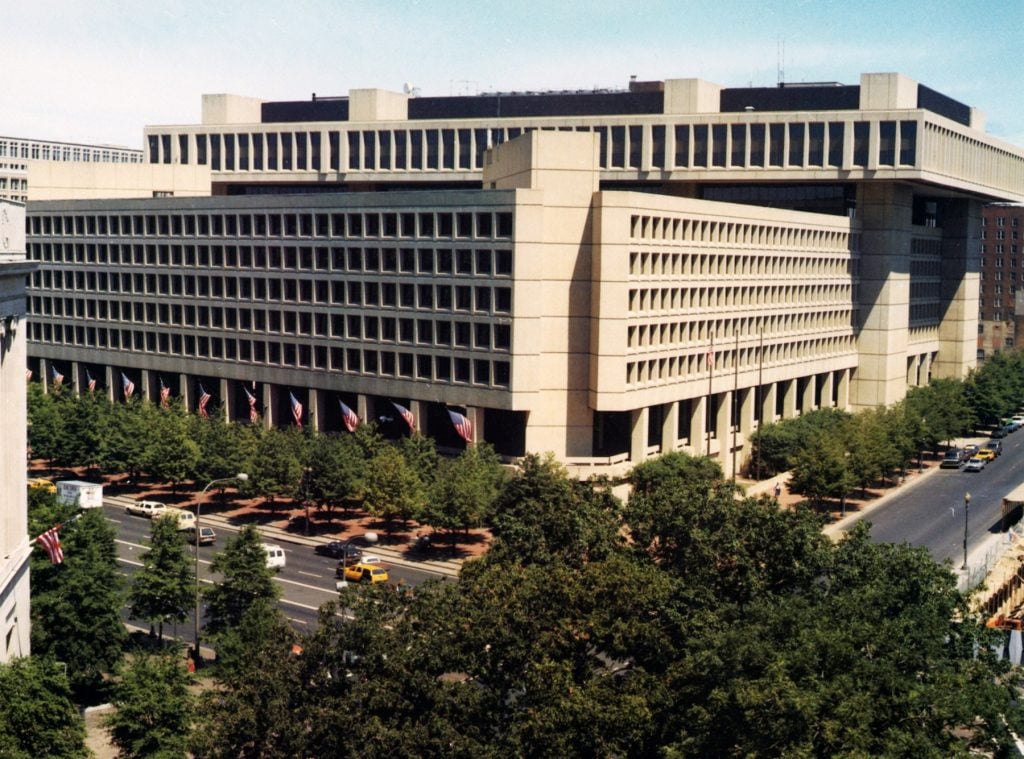Politics
How ‘Classically Beautiful’ European Architecture Became a (Failed) Rallying Cry for a Hard-Right Republican Caucus
Anti-modernism was a serious talking point of Marjorie Taylor Greene's aborted America First Caucus.

Anti-modernism was a serious talking point of Marjorie Taylor Greene's aborted America First Caucus.

Ben Davis

Even by the standards of today’s right-wing politics, it was a doozy.
A leaked draft of the America First Caucus’s policy platform hit the internet on April 19. The group, an offshoot within the Republican Party reportedly involving QAnon-friendly representative Marjorie Taylor Greene, among others, called for defending the United States’s “uniquely Anglo-Saxon political traditions.” It also advocated for “America First Education,” for an investigation into “mass voter fraud perpetrated during the 2020 election,” for protecting Bitcoin as an investment—and it even had a few things to say about aesthetics.
Specifically, the American First Caucus’s section on “Infrastructure” led with this passage (clearly written by someone who really likes the word “befits”):
The America First Caucus will work towards an infrastructure that reflects the architectural, engineering and aesthetic value that befits the progeny of European architecture, whereby public infrastructure must be utilitarian as well as stunningly, classically beautiful, befitting a world power and source of freedom. As the Romans demonstrated with aqueducts, walls and roads, function and beauty are not at odds. Federally funded infrastructure, including roads, buildings, airports, seaports, bridges, should demonstrate a pride of workmanship. A bridge is not merely something to cross from side A to side B, it is a connection among peoples.
Backlash to the proposed America First Caucus was fast and fierce. California Democratic representative Ted Lieu tweeted sarcastically, “Will non Aryans be allowed to join?”, while Florida Republican representative Carlos Curbelo slammed it as “a modern, decaf version of the KKK.” Greene and others initially associated with the document such as Arizona Republican Paul Gosar quickly disavowed the plan to found a new caucus.

Logo from the draft America First Caucus Policy Platform.
Still, what to make of the architecture plank of the aborted manifesto?
The whole document is an attempt to cast the America First Caucus as taking up the mantle of Trump. So the reference to promoting “the progeny of European architecture” seems to be a nod to Trump’s lame-duck “Promoting Beautiful Federal Civic Architecture” executive order from December 2020, which mandated that new federal buildings be in “Neoclassical, Georgian, Federal, Greek Revival, Beaux-Arts, and Art Deco” styles, and railed against “Brutalism,” “Deconstructivism,” and the “architectural elite.” In February, newly elected president Biden revoked Trump’s order.
Is this genuine aesthetic populism? A poll done last year by Harris Poll with the National Civic Art Society, an organization that advocates for classical architecture, found that more than 70 percent of Americans do prefer Federal buildings in what is perceived to be a “classical” style over more modern styles. Still, it hardly seems like an issue that most people vote on, making it a weird point to include in your main political platform.

The J. Edgar Hoover Building in Washington, D.C., a particular object of dislike for foes of Brutalist architecture. Photo 12/Universal Images Group via Getty Images.
Elsewhere in the same document, the authors seem very concerned with retooling U.S. policy to take on China as a “peer competitor.” But China’s infrastructure boom has been nothing if not futuristic. It’s hard to make major buildings that meet modern demands on cost, scale, energy efficiency, accessibility, and so on otherwise.
Clearly, the whole labored phrase from the America First platform about returning to “stunningly, classically beautiful” infrastructure doesn’t make much sense at all unless you are not really talking about architecture, and are just looking for different political synonyms for “Make American Great Again.” As with Trump’s pronunciations on the matter, it mainly makes sense as a mash-up of a bunch of different impulses: a preference for buildings with columns; an appeal to a nostalgic sense of a happier past; defending pride in white heritage; and anti-intellectualism strained through the lens of anti-modernism.
Whether the rise and fall of the America First Caucus suggests that this kind of aesthetic proxy war rages on or is in retreat remains to be seen.